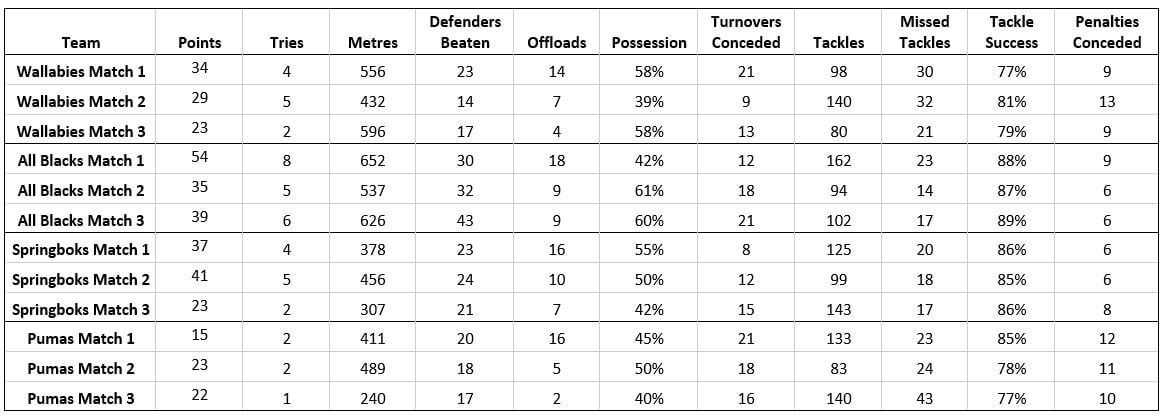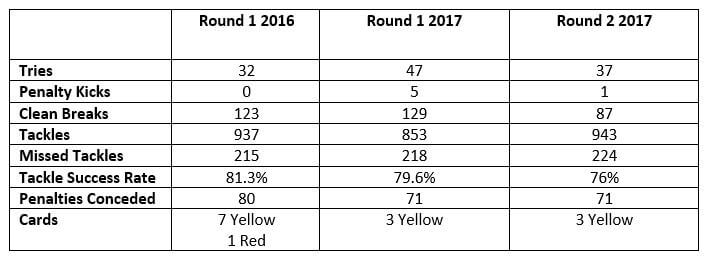This week in the Top 5 we look at the good, bad and ugly from the weekend in rugby, stare at a whole bunch of stats, take some time to consider development pathways in Australia and gawk at some great highlights from the NRC.
The Good, The Bad and The Ugly
Good – This weekend the NRC once again served up some cracking games. Another nail biter from the Vikings and Spirit, and how awesome was it to see the Fijians running tries in all over the place (I told you they’d be a threat!).
Bad – I know we didn’t lose to the Springboks, but that was a match we could, and in my opinion, should have won. We had the lead, the majority of possession, home ground advantage … it was ours for the taking. But we didn’t. Which leads us to the ugly …
Ugly – 8 from 21. That’s 38%. That’s how many matches the Wallabies have won since the 2015 World Cup. Of those wins, 3 have been by 6 points or less. Of those wins only 1 team is above us in the world rankings. The rest are ranked 6,7,8,9,10 and 14. On the other side of the coin, of the 12 matches we lost, only 3 were by 6 points or less. Then there was a draw.
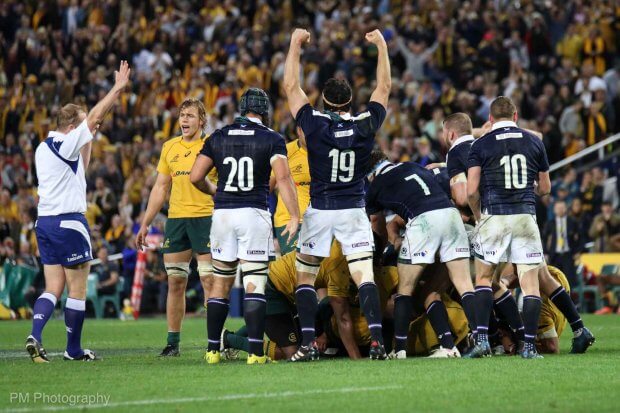
By the numbers
So another round of the Rugby Championship down, another set of stats to look at. To be honest there really aren’t too many surprised when we look at the numbers. I have compared the 4 teams against each other in attacking and defending stats. I have also included those stats for all the matches so far, sorted by team to see if there are any patterns emerging or noticeable improvements.
When looking at the stats for all teams it becomes apparent that the Wallabies and All Blacks run a lot more than the Springboks and Pumas. With the All Blacks this adds up to more points, but not so much with the Wallabies. We run a lot, but then what happens? We also have a lot of possession compared to the opposition, so again … what do we do with it?
Unsurprisingly we have the lowest tackle success rate out of all the teams. On average we are at 79%, just below the Pumas on 80%. This is clearly one of the biggest problems and as yet it is the one area that we are seeing little sign of improvement.
NRC
This week we saw some more fantastic games of rugby. Once again, the Canberra Vikings were involved in the tightest match, this time leaving it until the last minute to run in a try to get up over the Spirit, in a game that really could have gone either way. The rest of the matches were all bigger margins, but no less entertaining.
I thought we’d have another look at the stats to see if there is anything noticeable or interesting going on.
Interestingly, out of the 87 clean breaks, 37 of them came from the Rays v Rams match.
At the game there was a lot of confusion regarding the Vikings yellow card. The referee carded Ben Johnston for a deliberate knock down, but it looked as though he was showing the card to Tom Cusack, who then went back to join the team. Those around us in the crowd were watching the exchange between Cusack and the referee and didn’t see Johnston go off, so there was a lot of conversation about whether a card was given or not.
Sadly the tackle success rate dropped this week, let’s have a look at how the individual teams went.
So firstly … what an effort from the Melbourne Rising … 187 tackles!! I bet there were some tired bodies after that. The Rams had a bit of a shocker and the Rays not too much better (which could explain the 37 clean breaks from that match) while Qld Country showed they are pretty tight in defence with another high percentage. Does the lower percentage mean there is more emphasis on attack? It may look that way with more metres run, but there were less tries scored. We will keep an eye on these stats to see how the season progresses.
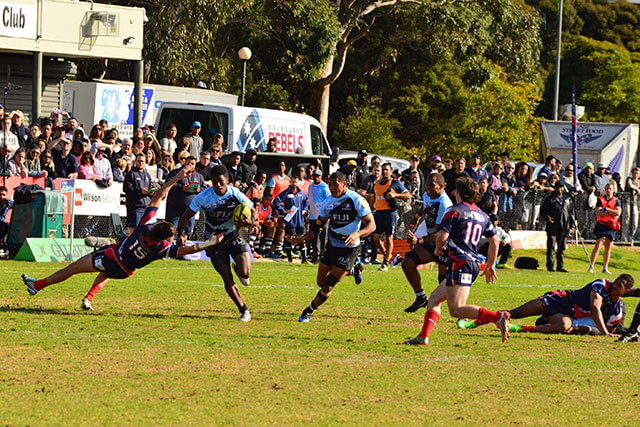
Development, what development?
“I think the arse has dropped out of our development systems,”. It was interesting to read Laurie’s views on the current state of development and his perspective after returning from his few years overseas. We are all very aware of the current financial issues around the top tier of our game and it appears to have been another casualty of the mythical spreadsheet. I will spare you the ARU political mantra of ‘savings for development and grassroots’ and less is more. The spreadsheets and explainer from the ARU about the ‘cash’ crash post 2017 that include recent increasing surplus and current profits don’t contain mention of academies or any Super Rugby development programmes. The reality is it’s probably the most important question that Rugby needs to deal with, and quickly. Irrespective of if Australian rugby lucks out with a big TV deal in the next few years, the lack of investments in development and pathways may see a continuing decline in our performance on the field. It is well acknowledged that Aussie rugby is at least one step lower than the Kiwis now, and what is it we are doing about it right now let alone in the future? Rugby generations turn over very quickly. Back in 2013 the average career length for a professional rugby player was 7 years and that seems to be reasonable based on today’s standards. So by the time Aussie rugby potentially moves into its next phase in 3 to 4 years, a significant proportion of the Wallabies and Super Rugby players may be in the latter half of their careers or already retired from the top level. The irony of this appears to be that the claimed motivation of the ARU in cutting a team is in part to supposedly lift the performance (standard) of the Aussie Super Rugby teams; but with minimal discernible investment in the future.
“We’ve paid some exorbitant money to keep people and to get people back; do we really need them? “Is that the future?” Fisher’s questions here are very valid in my opinion. In our everyday lives, we all have to face the reality of living within our means. Even governments universally have had to introduce Austerity measures that have seen jobs cut, wages impacted and looked towards future investments due to changes in the global economies. But conversely in a tight economic environment (by their own admission) the ARU has added staff to the Wallabies, added players increasing the size of the squad and extended the duration of the training camps in addition to still paying high wages to players. But what about the development of players, pathways, grassroots? Will the reputed $6million per year savings really fix the key section of rugby that our future depends on?
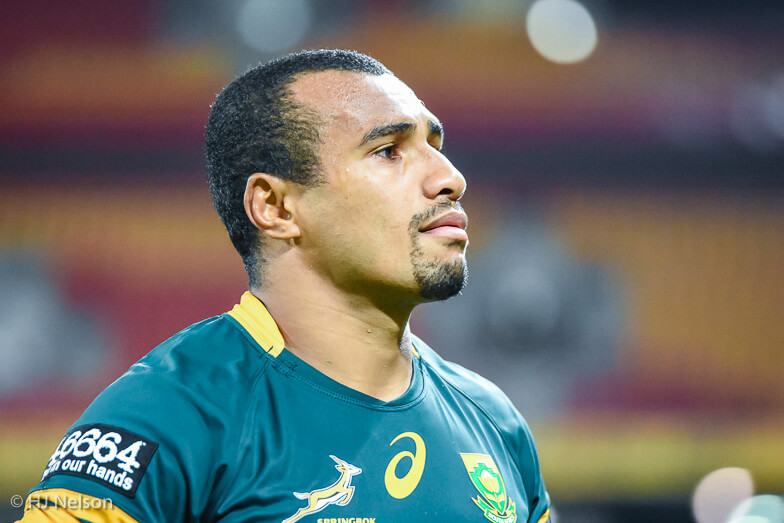
Recently I have wondered with all the ARU spruiking about stemming the decline in the game, have they really implemented some programmes or just gone through the motions and appointed someone to look the part? The cynic in me has suspected that even with all the extra coaches, staff and programmes around the Wallabies, a national coaching director, all supposed to working in unison to stem the decline of the game nationally, I wondered if it was truly accessible and open or something just for a niche few people who are part of the “clique” or more smoke and mirrors; just another political line to reassure the natives if you will? This gave me a fairly good idea:
As a young Canberra coach, I’d love the chance to learn and hear some ideas from the best, but haven’t heard of any opportunities?
— James (@Pacman_07) 10 September 2017
This is yet more evidence that the opportunities and access for development in our game is yet to get to a level that can really influence the grassroots.
Armed with the statements Fisher made around the development of Aussie rugby it was a perfect weekend to have a critical look at Aussie rugby with Rugby Championship and NRC games on. The Wallabies game yielded the usual suspects; missed tackles and lot of metres for little return.
But watching the NRC was really quite interesting. Watching the Fijian Drua play on Saturday had me fascinated every time they went on attack at their ball handling skills and positioning. Their desire to work and want the ball was amazing to watch, and refreshing. Watching them work it was ironic that they possess ball handling skills that we wish Aussie rugby players had. The natural abilities you can see as they attack come from just playing the game and ironically their undoing is the lack of structure and discipline that is still being developed. The contrast in watching the Fijians getting back in the line and wanting the ball again and again compared to watching Aussie players more worried about if they are in the right position in the formation becomes apparent quite quickly. I also found their lack of desire to go to the set piece at penalty time intriguing, rather just wanting to tap and get back to it. Maybe there is a lesson to be learned in that for Aussie rugby. Unstructured play is a real weakness in Aussie rugby and it may come from the way we coach the game.
Watching the Viking v Spirt game showed that there are young players who do have a high level of skill but how far they will make it in Australia is now a real concern and with diminished opportunities.
To reinforce our lack of pathways, foresight and inability to identify or retain talent comes the news that Tyrel Lomax will be heading to NZ to chase his international aspirations. Being of Kiwi heritage we can more readily accept this. But to then have that followed up on Monday by the revelation an ACT schoolboy from the National Championship winning school boys squad, who was not selected for the National Schools boys squad, has been approached by the Kiwi Super Rugby franchise the Chiefs really does raise concerns about how we (Aussie rugby) are investing let alone have a clue about our future. What’s most scary about this is that even here in Canberra (via the Brumbies) its recognised that the best pathways to development for young Aussie players may no longer be on shore but elsewhere.
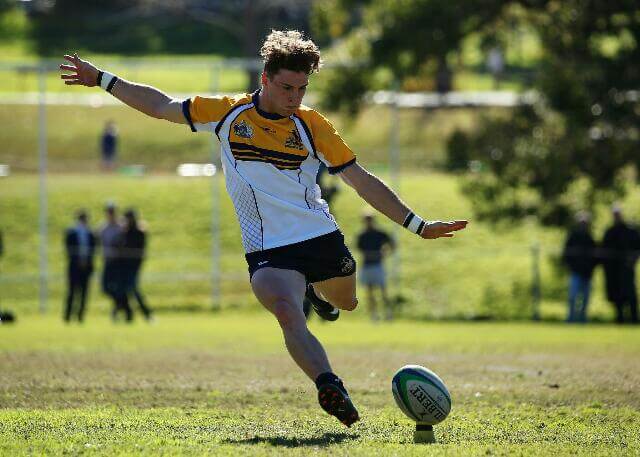
Photo Credit: ARU Media/Karen Watson
“I think the arse has dropped out of our development systems,”. Fisher’s statement might be closer to the truth than we want to believe and might also be the real reason we have the player drain we do and the performance decline we are suffering.
It begs the question: are we feeding overseas teams more players than we ever have by our own attempted policies to stop the player drain in combination with continuing reduction of pathways and opportunities?
VIDEO HIGHLIGHTS
And to end on a bit more of a positive note again, here are some of the highlights from the NRC this weekend, where we saw some outstanding tries scored. Seriously … how good are the Fijian tries?




